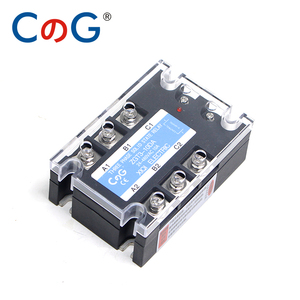Understanding SSR Relay: An Essential Component for Modern Applications
If you’re searching for reliability in electronic switching systems, look no further than the SSR relay (Solid State Relay). Unlike conventional electromechanical relays that use mechanical parts to switch a circuit, SSR relays leverage semiconductor properties to perform the same function with heightened precision and durability. They are integral in various industrial and commercial applications, where swift and stable switching is a top priority.
Types of SSR Relay Available
SSR relays come in various types, tailored to meet specific requirements. Below are the most common categories:
- Phototransistor Type: Ideal for low-current applications, these rely on light to activate the switching mechanism.
- Thyristor Type: Designed for high current and high voltage applications, they are particularly prevalent in power control setups.
- Triac Type: Best suited for AC loads, they can control both positive and negative halves of the waveform.
- DC Solid State Relays: Perfect for switching DC loads, ensuring minimal heat generation during operation.
Function and Features of SSR Relay
SSR relays are renowned for their exceptional function and features, making them popular in various industries. Here’s what sets them apart:
- Fast Switching: SSR relays can switch on and off almost instantaneously, contributing to efficient process control.
- High Reliability: With no moving parts, SSR relays offer unparalleled durability and a longer lifespan than traditional relays.
- Noise Free Operation: As they operate silently, SSR relays are perfect for environments where noise reduction is essential.
- Thermal Management: Many SSRs include heat sinks to ensure optimal temperature during operation, preventing overheating.
- Voltage Rating: Most SSRs can handle a wide range of voltage levels, which allows for flexibility across applications.
Applications of SSR Relay in Various Industries
The versatility of SSR relays makes them indispensable across multiple sectors:
- Industrial Automation: Used in assembly lines and robotic systems for precise control.
- HVAC Systems: Commonly employed in heating and cooling systems where accurate temperature control is vital.
- Home Automation: Perfect for smart home devices, allowing remote control of appliances.
- Telecommunications: Key components in switching and signal maintenance within telecom networks.
- Renewable Energy: Essential in solar energy systems, aiding control and efficiency in solar inverters.
Advantages of Choosing an SSR Relay
The benefits of incorporating SSR relays into your projects are numerous:
- Increased Efficiency: Reduced energy consumption and downtime lead to cost savings in the long run.
- Enhanced Control: Smooth, swift transitions improve overall system stability and responsiveness.
- Simplified Integration: Easy to interface with microcontrollers and other automated systems, minimizing installation time.
- Safety: Reduced risk of electrical shock due to their isolation characteristics and built-in safeguards.
- Compact Design: Smaller footprint compared to traditional relays allows for space-saving in equipment design.
































































































































































































